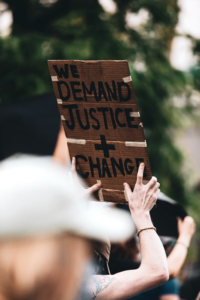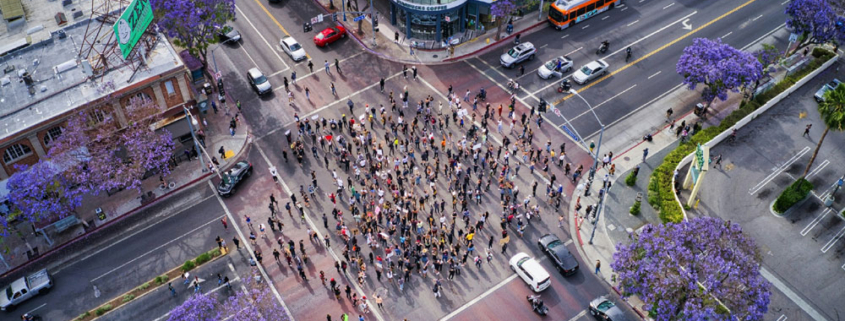Civil Unrest: Stay Safe During Protests and Riots in Canada
In an era of social change and activism, understanding how to stay safe during civil unrest is crucial. Let me offer some strategies to navigate protests and riots while prioritizing personal safety and well-being.
What Is Civil Unrest?
Civil unrest refers to a situation in which there is a disturbance, disorder, or conflict typically involving a large group of people. This can manifest as protests, demonstrations, riots, strikes, or other forms of public expression of discontent or dissatisfaction.
Key characteristics of civil unrest include:
- Public Dissatisfaction: Often arises from a sense of dissatisfaction or frustration within a population.
- Collective Action: Individuals who share common concerns or grievances. This can take the form of peaceful protests, demonstrations, or escalate to violence and rioting.
- Expression of Discontent: This expression can involve a range of activities, from peaceful marches to confrontational actions.
- Government Response: Civil unrest often triggers a response from law enforcement to maintain public order. The level of response varies based on the nature and intensity of the unrest.
Positive & Negative Aspects of Civil Unrest:

Stay Informed:
Stay on top of current events and potential protests in your area. Utilize trusted news sources and social media responsibly to stay informed about the nature and location of gatherings.
- Example: During the G20 protests in Toronto in 2010, staying informed about the permitted demonstration areas helped individuals avoid areas of potential conflict.
Plan Your Route:
If you find yourself near a protest, plan your route carefully. Identify exit points and alternative routes to ensure a quick and safe exit if needed.
- Example: During the 2020 Black Lives Matter protests, many participants in Ottawa strategically planned their routes to peacefully express their views while avoiding confrontations.
Dress Appropriately:
Wear neutral clothing and avoid clothing that could be associated with specific groups. Dress comfortably, wear sturdy footwear, and consider protecting your eyes and respiratory system with goggles and masks, depending on the severity of the protest/gathering.
- Example: Protesters in Vancouver during the 2011 Stanley Cup riots who dressed casually were less likely to be targeted than those wearing team-affiliated clothing.
Maintain a Safe Distance:
Keep a safe distance from the crowd and law enforcement. This minimizes the risk of being caught up in confrontations and allows you space to react if situations escalate.
- Example: During the Quebec student protests in 2012, maintaining a safe distance from police lines helped individuals avoid unnecessary confrontations.
Carry Identification:
Have a form of identification on you at all times. This is essential in case of arrest or medical emergencies.
- Example: During the student Montreal protests to prevent tuition increases and cuts to social services in 2015, individuals who carried identification were able to facilitate faster processing if detained or require registration/ check ins.
Communicate with Family and Friends:
Inform someone you trust about your whereabouts and expected return time. Establish check-in points to update loved ones on your safety during and after any event.
- Example: In the aftermath of the 2019 climate protests in various Canadian cities, effective communication helped reassure concerned family members.
Know Your Rights:
Understand your rights when participating in a protest. Familiarize yourself with laws regarding assembly and free speech to ensure you can exercise your rights confidently. Might I point out that every human has the right to personal safety.
- Example: During the ‘Idle No More’ protests in 2012, indigenous rights activists were well-versed in their rights, contributing to a peaceful expression of their grievances.
Be Mindful of Digital Footprint:
Exercise caution when sharing information online. Avoid disclosing sensitive personal details and be aware that law enforcement may monitor social media, especially if things escalate.
- Example: Participants in the 2018 Trans Mountain pipeline protests in British Columbia were cautious about their online presence to protect their privacy.
Conclusion:
As Canadians engage in civic discourse, being prepared is a responsibility we all share. By staying informed, planning ahead, and prioritizing personal safety, we can contribute to a society where peaceful expression exists. This guide empowers individuals to engage in activism safely, fostering a culture where voices can be heard without compromising personal safety.
Democracy by definition is a form of government in which the power to govern is vested in the hands of the people. It is a system where citizens have the ability to participate in decision-making processes, either directly or through elected representatives. Let us all show respect to each other as people voice their own personal choices and opinions, which I can guarantee will likely differ from yours and mine. Have a lovely day!





